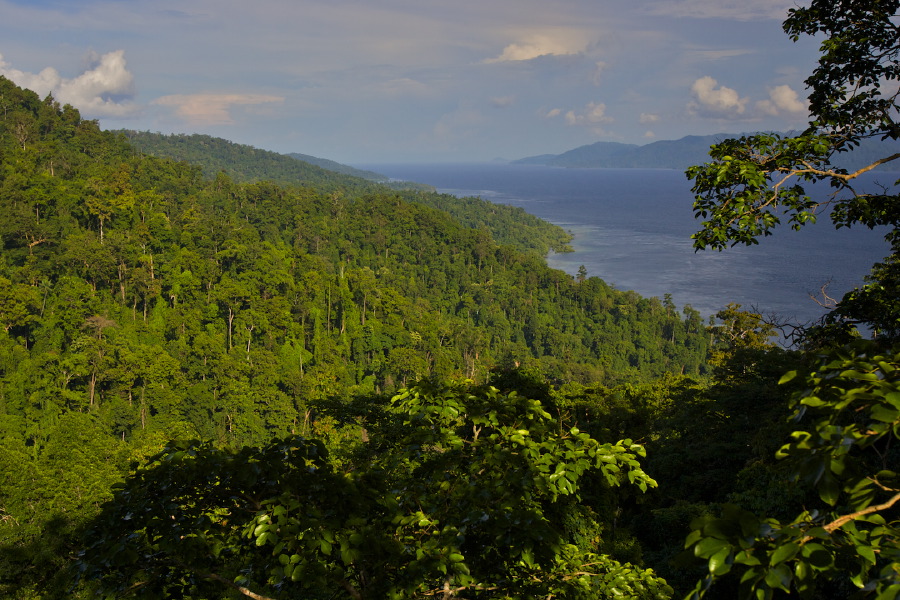
An economic cost-benefit analysis of forest conservation and restoration in Nicaragua
Program Summary
This PROFOR activity aimed to provide evidence to the Government of Nicaragua on the economic benefits of forest landscape restoration activities. The knowledge generated from this activity was intended to improve policy makers’ ability to made decisions on investments going towards rural livelihoods and incomes, reduced GHG emissions, and greater climate risk resilience.
Challenge
Based on climate change projections, water availability is likely to decline in most of Nicaragua's watersheds. A three-year drought, coupled with massive deforestation in the past few decades, has depleted most of Nicaragua’s water sources which is threatening the country’s future water supply. In fact, the country has lost up to 60 percent of its surface water sources and up to 50 percent of its underground sources, which have either dried up or have been polluted. Such diminished water availability will severely impact human health, agricultural productivity, hydropower generation, and a suite of other economic activities.
The government of Nicaragua recognizes that restoring forest cover is indispensable to safeguarding agricultural production and minimizing the impacts of climate variability on economic and human well-being. Under the National Reforestation Plan, the government is not only addressing the reduction of carbon emissions, but also aiming to increase awareness of the importance of reversing deforestation, increasing forest coverage, and improving the production of environmental services provided by forests.
To assist the government’s efforts, PROFOR proposed to provide analysis on the ecosystem service and economic benefits of forest landscape restoration activities, including disseminating information to decision makers on the trade-offs of different restoration scenarios. The results would guide the Nicaraguan government on implementing potential forest landscape restoration programs by providing potential prices for payment for ecosystem services and identifying the low-cost/high-benefit alternatives in watershed conservation, forest protection, and carbon sequestration. PROFOR would generate various restoration and investment scenarios that could open restoration and reforestation opportunities for farmers, local communities, and the private sector, including agribusiness and ecotourism.
Approach
This PROFOR activity consisted of the following tasks:
- Output 1: Analysis of the costs of environmental degradation. This task aimed to provide the analytical underpinnings to target interventions for climate change adaptation and mitigation. This task was to estimate the costs of environmental degradation resulting from land degradation and deforestation, droughts, soil degradation, fire, flooding, and other natural disasters. In addition, the analysis was to estimate the costs to Nicaragua associated with climate change.
- Output 2: Benefit analysis of a potential program for watershed conservation and landscape restoration in Nicaragua. This analysis aimed to estimate the benefits of forest and landscape restoration on the value of multiple ecosystem services across the country by estimating the net value of ecosystem service benefits (such as ecotourism, carbon sequestration, water quality, agriculture, soil protection, etc.) under different reforestation scenarios. It would also explore the economic potential of changing land use (such as degraded agricultural land) to restore native forest, or for agroforestry.
By accomplishing these tasks, the program aimed to inform and improve the Nicaraguan Government’s knowledge on how to promote policies and regulations that increase forest conservation, support a nature-based economy, and increase watershed conservation and landscape restoration in the country.
Results
Due to civil unrest in the country, work for this activity was frozen, delayed, and although eventually reopened, many limitations to activities were put in place due to continual political tensions. The team had initiated the diagnostics and analysis but was not able to collect all the information needed for the studies. Nevertheless, the team was able to put together a draft/preliminary report for Output 1: Analysis of the costs of environmental degradation. The government was very interested in this activity because of their interest in headwater conservation and landscape restoration. Analysis for Output 2 was partially included in this report as the needed data that was difficult to obtain due to the country’s political crisis.
Findings
The preliminary cost of environmental degradation (COED) to Nicaraguan society is estimated at about US$0.9 billion, or 6.7 percent of the country’s GDP in 2016. Among the costs, it is important to note the following:
- Air pollution stands out as the most important driver of degradation (3.8 percent of GDP). This primarily is due to the impacts caused by household air pollution (about 1,060 premature deaths).
- Unsafe water supply, sanitation, and hygiene cause significant damage (1 percent of GDP) largely as a result of the effects of inadequate water supply, sanitation, and hygiene on health (about 260 deaths).
- Agricultural land degradation, deforestation, and natural disasters are also noteworthy because of their negative effects on resource productivity and ecosystem services.
- In case of devastating natural disaster scenario, cost of natural disasters will be comparable to the average annual total national cost.
- All zones in Nicaragua appear to have similar COED, but environmental health costs dominate in the Pacific and Central zones, while natural resource degradation dominates in the Atlantic zone.
The findings of the COED in Nicaragua can be useful for future project GEF preparations, SCD, CPF, and DPLs, among others.
For stories and updates on related activities, follow us on twitter and facebook , or subscribe to our mailing list for regular updates.
Last Updated : 06-15-2024








